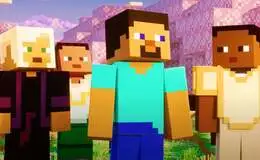What is Minecraft?
Minecraft is a popular sandbox video game that allows players to build and explore virtual worlds made up of blocks. It offers endless possibilities for creativity, adventure, and collaboration.
What is the history of Minecraft?
Minecraft was created by Markus Persson, also known as Notch, and released in 2011. It quickly gained popularity due to its unique gameplay mechanics and open-ended nature. Originally developed as an indie project, it was later acquired by Microsoft in 2014.
Why is Minecraft culturally important?
Minecraft has had a significant impact on popular culture. Its blocky visual style has become iconic and recognizable worldwide. The game has inspired countless fan creations, including artwork, sculptures, music videos, and even virtual recreations of real-world locations.
Moreover, Minecraft has fostered a strong community of players who engage with each other through forums, social media platforms, and multiplayer servers. This sense of community has led to collaborations on large-scale building projects and the sharing of innovative gameplay ideas.
Who is Minecraft for?
Minecraft appeals to a wide range of audiences. It can be enjoyed by both children and adults alike due to its simple yet versatile gameplay mechanics. Creatives are drawn to the game’s ability to provide an outlet for artistic expression through building structures or designing pixel art.
Additionally, Minecraft offers educational benefits by promoting problem-solving skills, teamwork, resource management, and spatial awareness. Many schools have integrated the game into their curriculum as a tool for teaching various subjects such as mathematics or history.
Whether you’re looking for a creative outlet or seeking an immersive gaming experience with friends or family members, Minecraft provides a world full of possibilities waiting to be explored.
